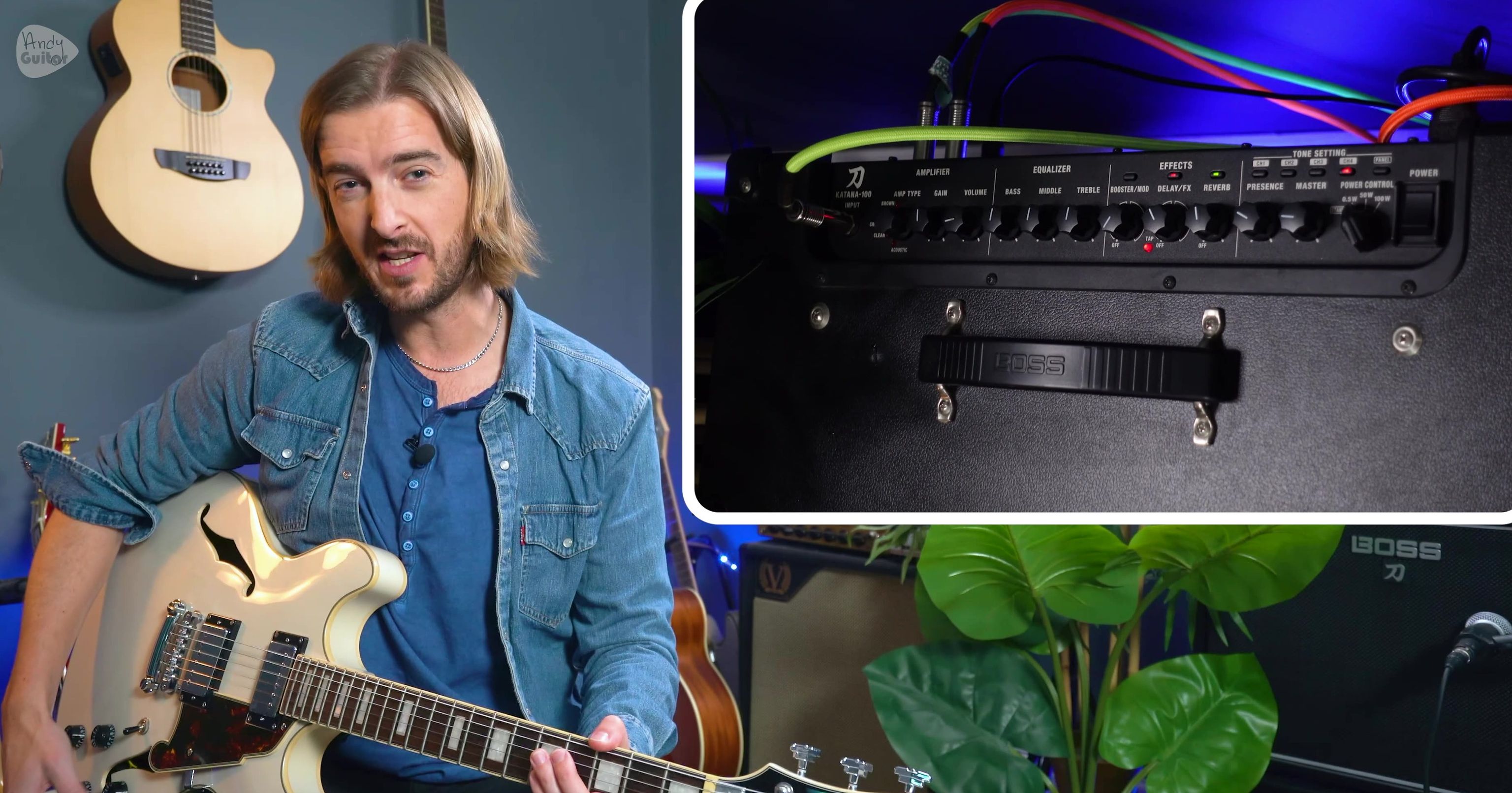In this video
Let me walk you through how to set up your electric guitar and get great sound from your amplifier!
We'll explore the different types of amp sounds (the sounds in a digital amp, eg. Crunch), understand key tone controls and learn how to use effects like reverb and delay without overwhelming your sound.
Whether you’re playing clean or distorted, this guide gives you the confidence to dial in a solid tone with the gear you already have.
Essential Gear Setup
Minimum setup: Electric guitar, instrument cable, and amplifier
Plug your guitar into the main input on the amp, then power it on
Use a clip-on tuner, pedal tuner, or amp tuner to ensure proper tuning
Understanding Amplifiers
The focus in this course is on physical amps with controls on the amp itself
Common amp sounds:
Clean – clear, undistorted sound
Crunch – light overdrive
Lead – more gain and distortion for searing solos!
Brown (found on a Boss Katana) – warm, saturated tones (often associated with Van Halen)
Signal Chain & Tone Control
Signal chain: Guitar → Cable → Amp (Gain/EQ/Effects) → Speaker
Start with:
Pickup selector on bridge or neck position
Guitar volume/tone knobs on full (unless dialing back for effect)
EQ Controls:
Adjust Bass, Mid, and Treble slightly to shape tone
Don’t expect extreme changes—focus more on amp type and gain
Gain vs. Volume:
More gain introduces distortion
Master volume controls loudness— watch out for sudden volume jumps
Using Effects the Right Way
Reverb adds depth and space
Delay adds echo; can get messy if overused
Use effects sparingly at first—start with a clean or mildly distorted tone
Smart Gear Use
Multi-effects pedals give access to a range of tones (great for exploring)
Small practice amps (0.5–10W) are more than loud enough for home use
Don’t rush into buying new gear—learn your current setup first
Mindset & Progress
Your current gear is good enough to learn and sound great
Upgrade only when your playing and musical goals require it
Always try new gear before buying—trust your ears, not just specs

